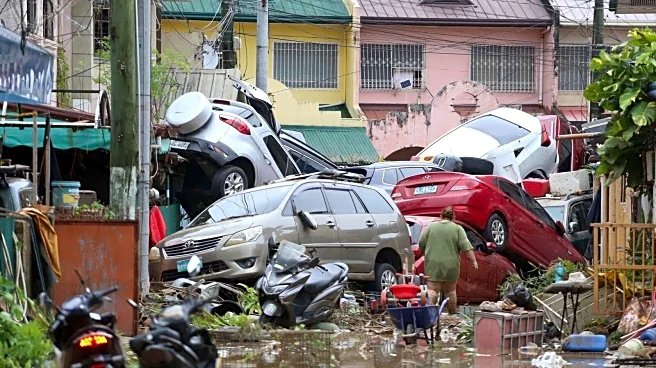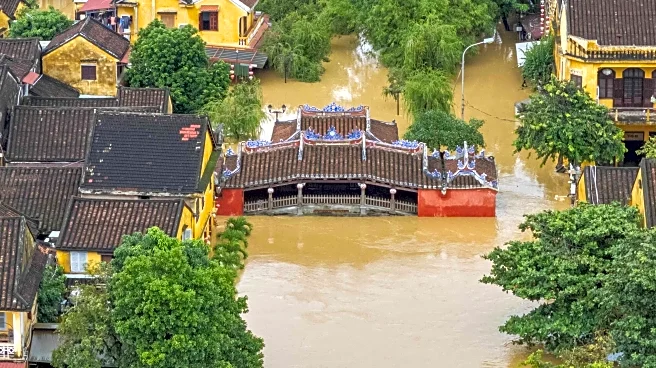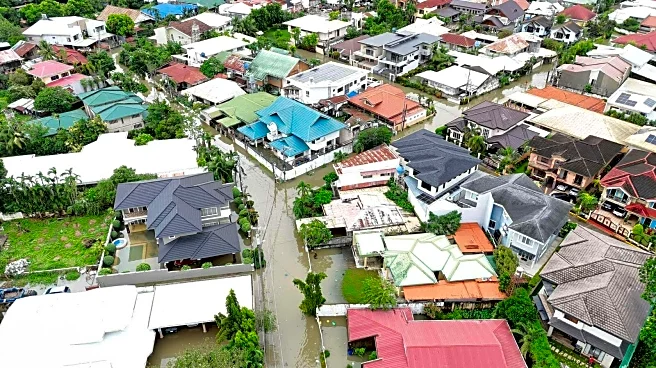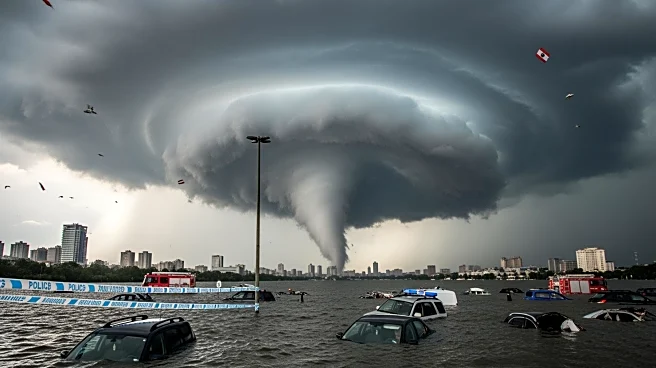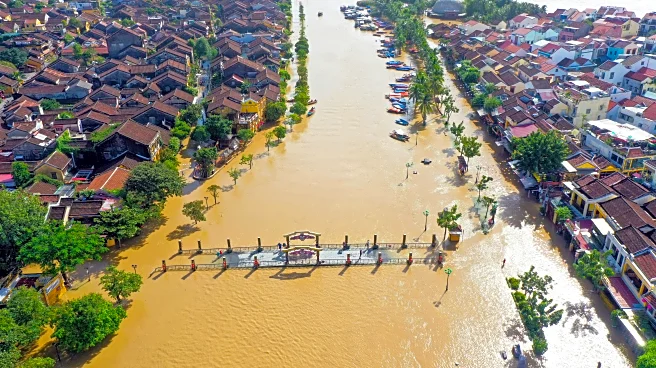What's Happening?
Typhoon Kalmaegi has devastated the central Philippines, resulting in at least 26 deaths and displacing hundreds of thousands. The storm made landfall shortly before midnight, causing severe flooding and forcing
residents to seek refuge on rooftops. The typhoon affected the Visayas island group and parts of Luzon and Mindanao, with winds reaching 150 km/h. The Office of Civil Defense reported that most fatalities were due to drowning. The storm has disrupted transportation, with over 160 flights canceled, and a military helicopter crashed during relief efforts.
Why It's Important?
The severe impact of Typhoon Kalmaegi underscores the Philippines' vulnerability to natural disasters, which can have profound effects on its population and infrastructure. The widespread displacement and fatalities highlight the urgent need for effective disaster management and preparedness. The storm's impact on transportation and infrastructure may have economic repercussions, affecting local businesses and tourism. Additionally, the frequency and intensity of such storms raise concerns about climate change and its role in exacerbating weather patterns, influencing global environmental policy discussions.
What's Next?
As the typhoon continues its path, authorities are likely to focus on evacuation and relief efforts, with international aid potentially playing a role in recovery. The storm's trajectory towards Vietnam may prompt similar preparations in that country. Long-term, the Philippines may need to enhance its infrastructure and disaster response capabilities to better withstand future events. The government may also engage in international dialogues on climate change and seek support for sustainable development initiatives.
Beyond the Headlines
The repeated occurrence of typhoons in the Philippines raises ethical and environmental questions about global climate change and its impact on vulnerable regions. The reliance on international aid during such disasters highlights the need for sustainable development and resilience-building strategies. The cultural and social implications of repeated evacuations and loss of property may affect community dynamics and mental health, necessitating comprehensive support systems.



